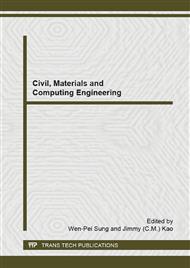p.539
p.543
p.547
p.553
p.558
p.562
p.566
p.574
p.579
Value Chain Analysis for Microalgae-Based CO2 Capture: A Case Study
Abstract:
This primary goal of this study is to facilitate robust strategic decision- making regarding current and future deployment of microalgae-based CO2 capture technology. Based on Porter’s value-chain theory, a chain of activities that are common to all businesses are divided into primary and support activities. This study then attempts designs a microalgae-based CO2 capture value-chain model. This model shows that value drivers of microalgae-based CO2 capture, benefit markedly economic development. According to this value-chain model, one can choose a suitable strategy that to increases economic value. The microalgae-based CO2 capture value chain is a practical task in the development of microalgae-based CO2 capture technologies for thermal power plants. This value- chain model will guide investments and inform deployment decisions for microalgae-based CO2 capture technologies.
Info:
Periodical:
Pages:
558-561
Citation:
Online since:
December 2014
Authors:
Keywords:
Price:
Сopyright:
© 2015 Trans Tech Publications Ltd. All Rights Reserved
Share:
Citation:


